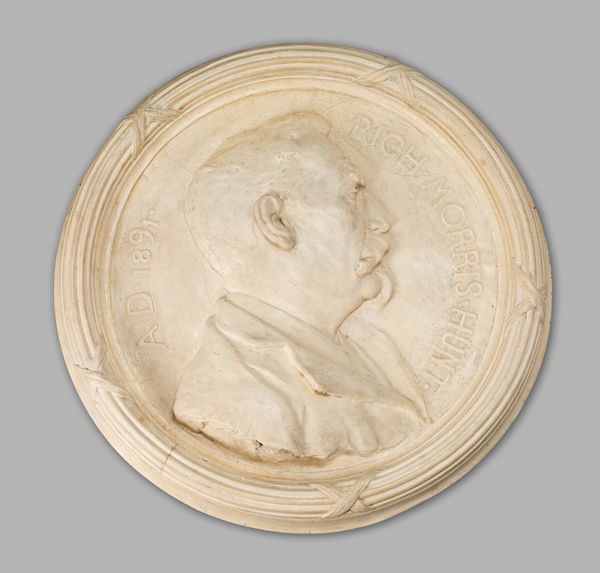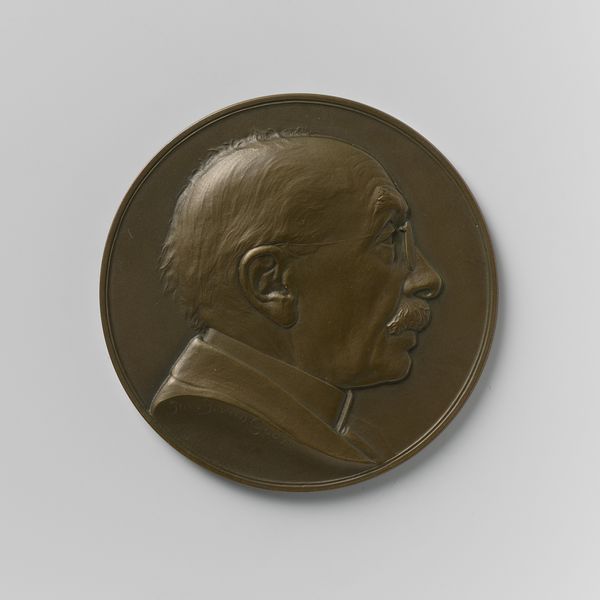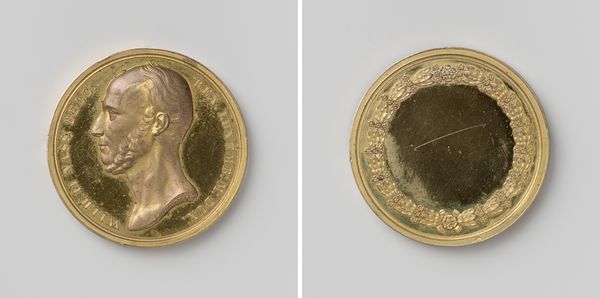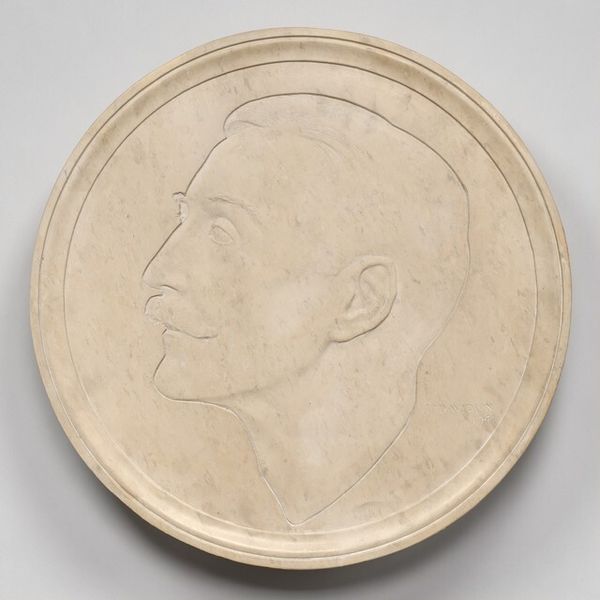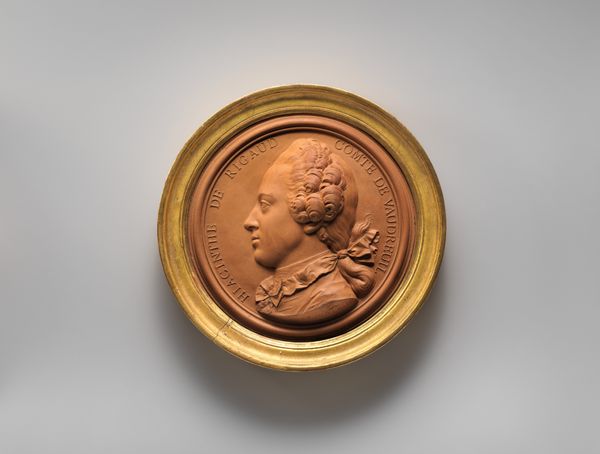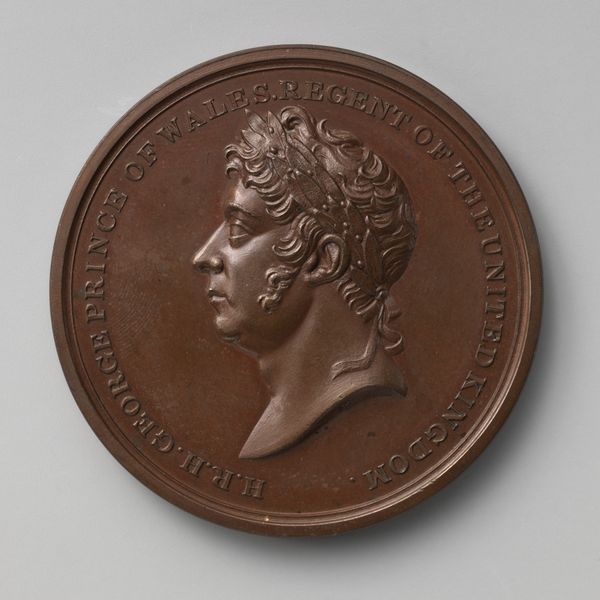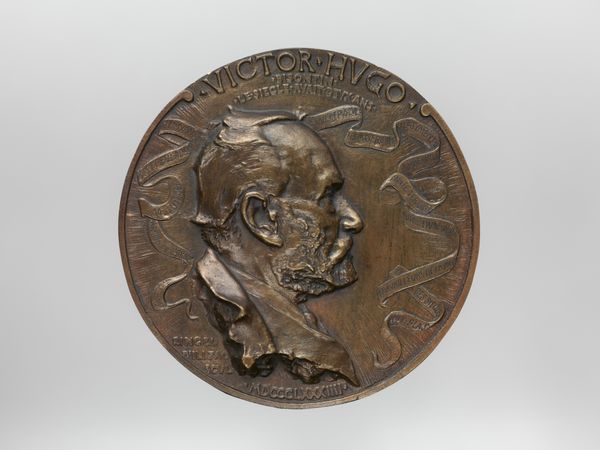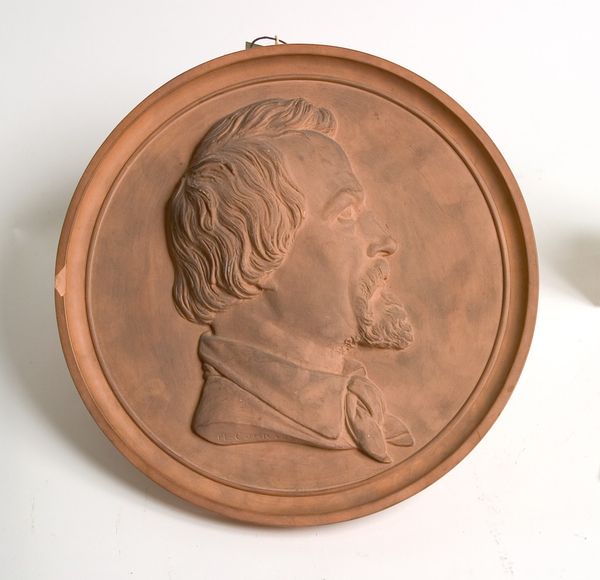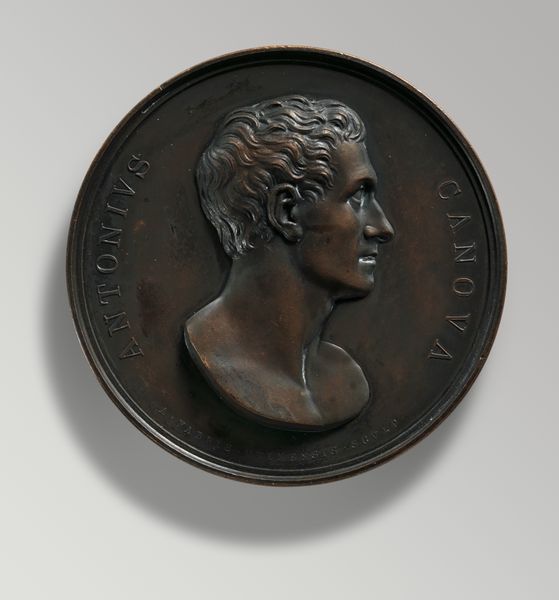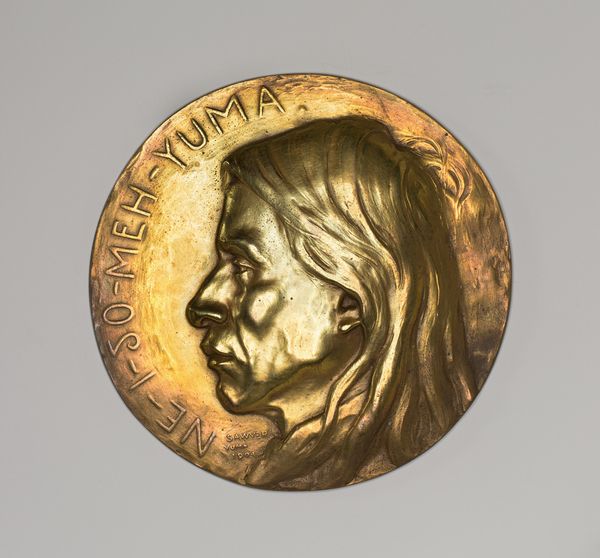
relief, sculpture, plaster
#
portrait
#
neoclacissism
#
relief
#
sculpture
#
plaster
#
ceramic
#
academic-art
Copyright: Rijks Museum: Open Domain
Editor: Here we have "Medaillon van gips" created by Dominik Mahlknecht in 1848, crafted from plaster. It strikes me as quite neoclassical in its style. What elements jump out to you when you look at it? Curator: Indeed. Let's consider the relief. The artist employs a limited depth of field, pressing the portrait forward. The smooth, almost polished texture of the plaster contributes to an idealized form, which also makes me think about neoclassical principles. Notice how the clean lines and lack of ornamentation focus attention on the subject's profile. Editor: It is interesting how the plaster and its texture speak to Neoclassical sculptures. Why profile, though? Curator: Think of Roman emperors or classical figures on coins and medallions, these forms become imbued with power. By opting for the profile, Mahlknecht nods to a tradition that equates portraiture with historical importance, reducing it to its contours. Editor: That’s fascinating! So, by choosing plaster and this profile view, Mahlknecht evokes this entire historical and artistic lineage, which adds depth and meaning to what could just be a portrait. It makes you consider who is portrayed, what class do they belong to? Curator: Precisely. It encourages us to view the sitter not just as an individual, but as a representation of certain ideals. Can the material reinforce status? The plaster looks worn. Does it bring the piece down, do you think? Editor: I see what you mean about it being about the principles rather than aesthetics, focusing on what it *represents*. It really puts emphasis on historical meaning! I had a bias against what seemed like decaying materiality at first glance. Curator: And this decaying nature further adds a layer of meaning, time and degradation adding a commentary layer to it. It challenges how the portrait itself should be seen and framed, its longevity or decay. Editor: That's a completely different perspective from what I initially saw. Thanks for pointing out how the composition itself shapes the interpretation of the portrait!
Comments
No comments
Be the first to comment and join the conversation on the ultimate creative platform.
